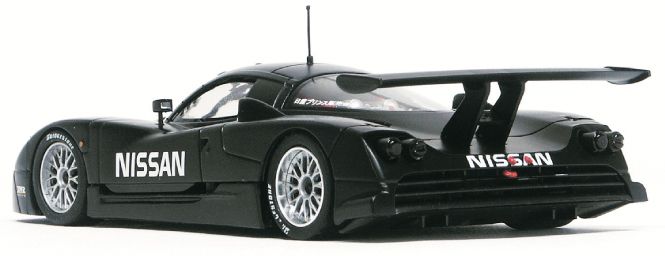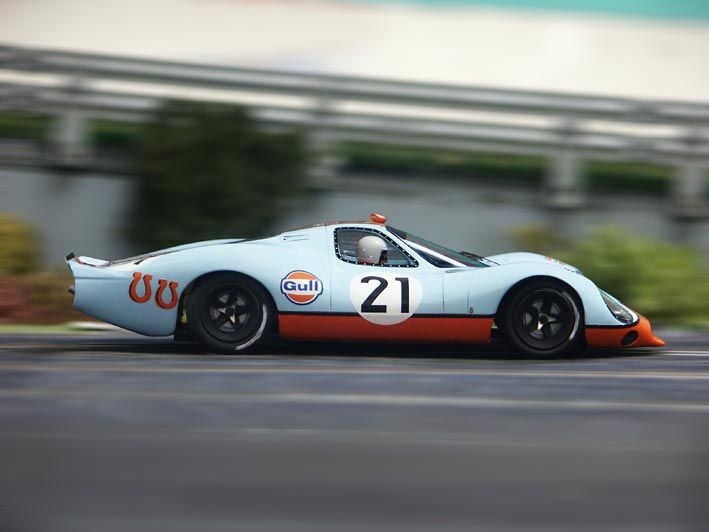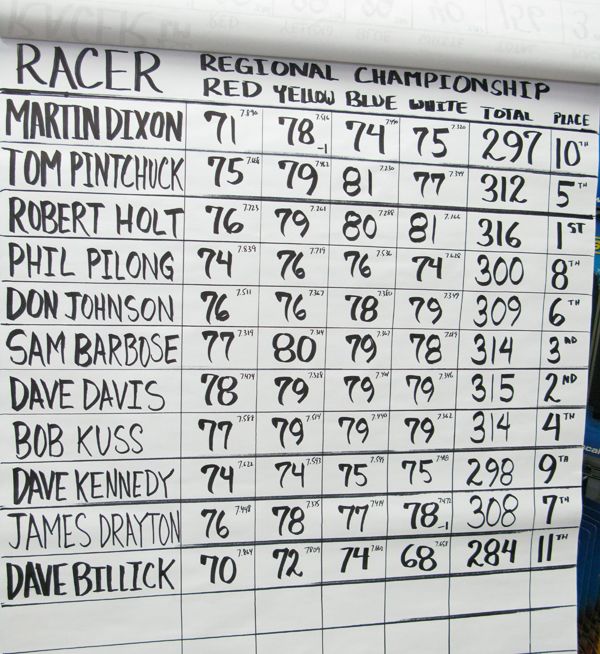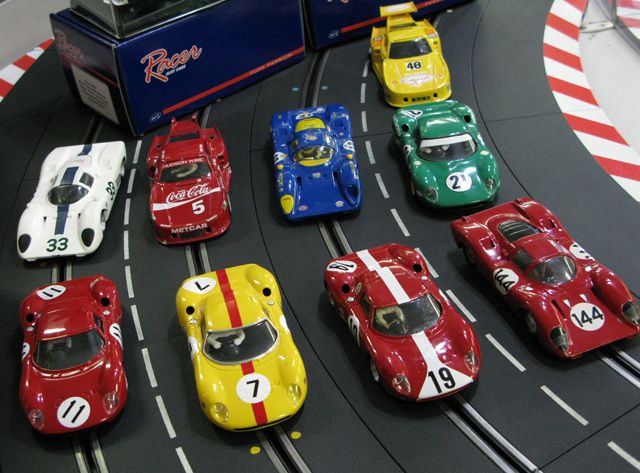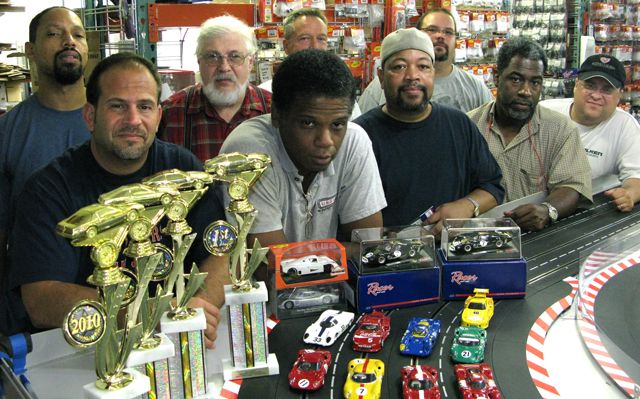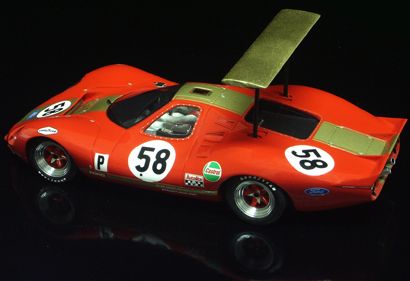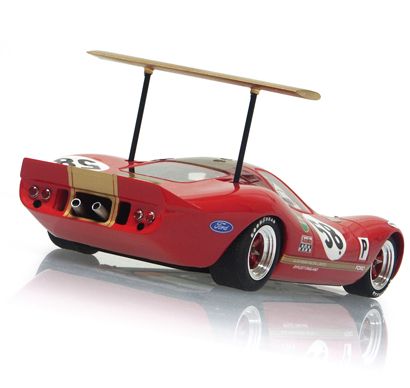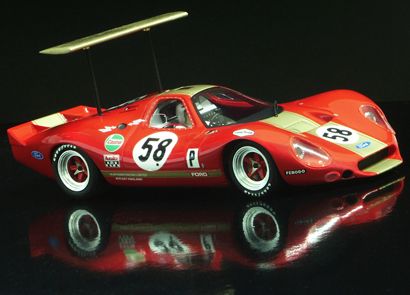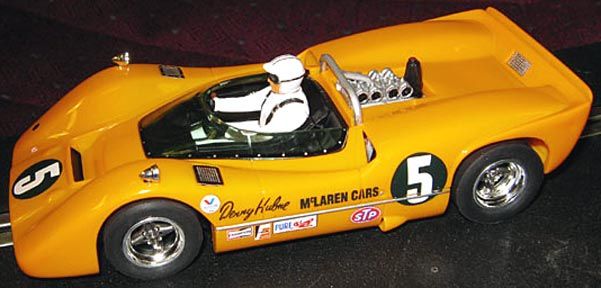 In stock at REH Distributors in Cincy.... the Revell 85-4838 McLaren M6.
In stock at REH Distributors in Cincy.... the Revell 85-4838 McLaren M6.
Tuesday, August 31, 2010
Thursday, August 26, 2010
2 New Racer Ford P68's-Slotlandia
Monday, August 23, 2010
New releases from Carrera arriving in North America soon
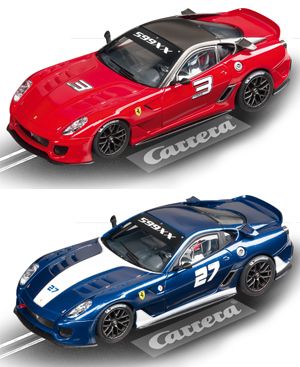 23748-Dig 124 Chevy Corvette
23748-Dig 124 Chevy Corvette25171-EV Ferrari Racing
27332-EV Dodge Charger Daytona
27333-EV 41 Willys Silver
27334-EV 32 Ford "Fire Engine"
27335-EV Ferrari 599XX Geneva
27336-EV Ferrari 599XX Race
30147-DIG 132 Ferrari Competition-Set
30514-DIG 132 Audi LeMans Series
30517-DIG 132 Red Bull Formula 1 car
30522-DIG 132 Porsche 917/30 "Cam2"
30526-DIG 132 Plymouth Superbird
30528-DIG 132 Dodge Charger
30532-DIG 132 Ferrari 599XX " Geneva "
30533-DIG 132 Ferrari 599XX "Race"
30142-DIG 132 Pro GT-Set
30478-DIG 132 Nissan GT-R
30523-DIG 132 McLaren "Gulf Racing"
25165-EV Night Racers-Set
27297-EV Nissan GT-R "Motul"
27327-EV Porsche 917/30 "Sunoco"
Thursday, August 19, 2010
AMA Superbike races at NJMP
 Come race slots at New Jersey Motorsports Park at the Driving Impressions store Labor Day weekend. Carrera of America will be doing a demo in front of Driving Impressions at the track during the AMA Superbike races Sept. 4th & 5th.
Come race slots at New Jersey Motorsports Park at the Driving Impressions store Labor Day weekend. Carrera of America will be doing a demo in front of Driving Impressions at the track during the AMA Superbike races Sept. 4th & 5th.
Tuesday, August 17, 2010
Carrera Audi R8 LMS – Model no. 27321

In 2009 Audi introduced the R8 LMS. Intended to be more than just another German supercar – it was also intended to be Audi's standard bearer in GT3 racing by way of factory supported privateers. While 2009 was intended to be a development year, this car quickly racked up victories in the ADAC, FIA, Italian, and Belgian GT3 series. That's 23 victories and 1 championship for a machine that's barely a year old.

Carrera brings us a model of the ADAC GT3 version of the R8 LMS as part of their Evolution line. Out of the box the silver and black ABT Sportsline Nurburgring livery looks stunning. This car sports the race number 100 in honour of Audi's 100th anniversary as a car maker. The lines on this model are all very crisp with no overspray and sharp tampo. Carrera have done a very good job of capturing the feel of the 1:1 car with this model. The presentation is helped by more finely rendered details: for example the wing supports aren't as chunky as what I'd normally expect from Carrera. Surprisingly this car is not fitted with lights.

Included with the car is an extra guide flag, set of mirrors, and braids – something all slot manufacturers should emulate. Unfortunately the shorter/thinner guide keel that is compatible with Scalextric Sport track is not included. No problem – I just pulled the long keel out of the Audi and replaced it with the 'Special' keel (part #85309) from a Carrera Capri in my collection. Carrera has done some work on their guide system offering approximately 160° of rotation which is quite an improvement over the approximately 90° offered by their previous setup. This guide is also self centering which makes for quick reslots after an off.

Under the hood Carrera has left lots of room on the chassis of the Audi R8 LMS courtesy of the pan interior and flat chassis. This is great for anyone who wants to convert the car to digital, or to non-magnet running as there's lots of room for either the chip or lead weight. It's nice to see brass bushings front and rear though there's significant play owing to the knurled axles used. One interesting feature I noticed in testing is the ability to bypass the direction switch courtesy of the modular electrical connections used between the switch, guide, and motor. The guide and motor connections can be hooked up directly and the now redundant switch can be easily removed by just removing 1 screw. While the switch only weighs 1g, it's removal does provide and excellent spot to place lead for non-magnet tuning.

On my 22m test track the Carrera Audi R8 LMS offered few surprises. The dual magnet design offers decent magnetic downforce (137g) without being overly stuck down. The car could be slid in the corners but overall was quite controllable. The stock plastic wheels proved to be fairly straight and true, and the stock rubber tires offered decent grip. Racers wanting to get more out of this car should consider gluing the tires to the rims as the fit was a bit loose.
The drivetrain did seem a little tight on my test car and I traced this to the pinion rubbing against the shoulder of the crown gear. I'm sure with some running this car will eventually break in, or with a bit of work the pinion could be pushed onto the motor shaft just a bit further allowing the rear axle to spin more freely. Even so, the Carrera Audi R8 LMS is in the zone with a few other current GT racers:
6.875s Scalextric Ford GT
6.992s Scalextric Aston Martin DBR9
7.255s Scalextric Maserati MC12
7.386s Scalextric Ferrari F430
7.435s Carrera Chevrolet Corvette C6R
7.436s NINCO Lamborghini Gallardo
7.529s NINCO Porsche 997
7.688s Carrera Audi R8 LMS
8.372s SCX Morgan Aero 8
The Carrera Audi R8 LMS performed respectably without the traction magnets in place lapping my test track in 10.6s. Magnets can be removed from the top side of the chassis though the body must be taken off to do so. Without traction magnets this car demonstrated no hop under power and could corner with predictability. Non-magnet performance was no doubt aided by the car's 100g overall weight as well as the wide range of rotation provided by the current guide design. Upgrading the factory tires to Super Tires 1410C silicone tires dramatically reduced the non-magnet lap time to 9.194s. Further gains in performance can most likely be realized by getting a slightly looser fit between the pinion and crown gear, adding lead ballast, reducing play in the axle bushings, and by gluing the tires to the rims and truing them.
Racers counting on out of the box magnet-car performance will not be disappointed. The car can be made competitive with only minor modifications. Those who prefer running their cars without magnets have a good platform to work with though will have to look at reducing this car's overall weight to make it competitive.
Thank-you to Carrera USA for the opportunity to test this car, Slot Car Corner Canada for the chance to evaluate a set of Super Tires, and to Mini Grid in Toronto for the use of their track.
-Van LaPointe
Saturday, August 14, 2010
Race Day at Bud's HO
Bud's HO
2141 Crompond Road
Cortlandt Mannor, NY 10567
Phone / Fax (914) 737-4070
Store Hours:
Mon - Closed
Tue - Closed
Wed - 11 - 7
Thr - 11 - 7
Fri - 11 - 7
Sat - 11 - 7
Sun - 11 - 7
Friday, August 13, 2010
Carrera D132 Porsche 917/30 (model #30521) - Carrera Evolution M20 (model #27328) - Carrera D132 McLaren M20 (model #30524)









The 917/30 and Black Label cars I tested are both digital – and my test track is analog - so I needed to be able to test the two D132 models in analog mode. Converting them couldn’t have been easier: I placed the D132 car on the track, I blipped my controller three times, flicked the switch under the car, and the Digital 132 cars were good to go. While Can-Am cars of this era never ran with lights, the Black Label car is equipped with an orange glow in the exhaust when the car is under power. This feature still works with the car in analog mode. A small yet subtle touch that looks very cool as the car is racing along.
On track both McLarens and the Porsche both ran well. The current guide design aside from allowing for an interchangeable keel offer approximately 170 degrees of rotation. The two traction magnets each car was equipped with made them easy to drive at speed though they would step out if pushed in the corners. I brought a few other Can-am models to the test track with me that day in order to compare lap times. Here’s how they stack up:- 6.088 NSR Porsche 917K
- 6.107 Revell/Monogram Chaparral 2A
- 6.590 Slot.it Alfa Romeo T33/3
- 6.703 Carrera D132 Porsche 917/30
- 6.759 Carrera D132 McLaren M20
- 6.788 Carrera Evolution McLaren M20
- 6.906 Slot.it Chaparral 2E
- 7.124 Fly Porsche 908 Flunder
- 7.812 Fly Porsche 917PA
- 8.855 HSRR McLaren M8D
Even though the Porsche and McLaren have different motors – the Porsche a standard S-can and the McLaren a slim FF can – the cars are very comparable in performance.
After running the Carrera cars with the magnets in place, I decided to remove them and see how they ran without. Both cars have two longish bar magnets mounted in the chassis. Carrera mounts them inside the chassis on these cars as opposed to attaching them to the bottom of the chassis in plastic housings held in by screws. To get them out, the body had to be removed as well as the motor, rear axle, and digital chip assembly.
- 10.268 Carrera D132 McLaren M20
- 10.394 Carrera D132 Porsche 917/30
- 10.416 Carrera Evolution McLaren M20

Thank-you to Mini Grid in Toronto for the use of their track.
Wednesday, August 11, 2010
Porsche Showcase - Official Porsche Design Drivers Selection Producs
Pikes Peak Porsche video... hold on!
US version of TopGear?
And BTW, why the heck are they all wearing the same shirt?!?!?
Monday, August 09, 2010
Carrera Chevrolet Dekon Monza – IMSA 1977 (model #27266)
 The Dekon Monza was a competitor in the GTO class of IMSA’s Camel GT series during the 70s. Chevrolet initially intended the Monza to be the first production car powered by its Wankel engine. Since that engine never made it into production a V8 was one of the available powerplant options used in place of it. In late 1974 Chevrolet provided several examples of the Monza to Dekon for conversion into racecars. The car was designed by Lee Dykstra and Horst Kwech (the D and K in Dekon). This race car was one of the first to use CadCam as part of its design and manufacturing process. Powered by a 600hp fuel injected V8 and blessed with near perfect 50/50 weight distribution the car was destined for success on the racetrack. No easy feat for what started out as a grocery getter when its competition consisted of thoroughbred racing machines from the likes of BMW, Porsche, and Ferrari.
The Dekon Monza was a competitor in the GTO class of IMSA’s Camel GT series during the 70s. Chevrolet initially intended the Monza to be the first production car powered by its Wankel engine. Since that engine never made it into production a V8 was one of the available powerplant options used in place of it. In late 1974 Chevrolet provided several examples of the Monza to Dekon for conversion into racecars. The car was designed by Lee Dykstra and Horst Kwech (the D and K in Dekon). This race car was one of the first to use CadCam as part of its design and manufacturing process. Powered by a 600hp fuel injected V8 and blessed with near perfect 50/50 weight distribution the car was destined for success on the racetrack. No easy feat for what started out as a grocery getter when its competition consisted of thoroughbred racing machines from the likes of BMW, Porsche, and Ferrari.  Carrera’s Dekon Monza is a model of chassis number 1004 as campaigned by Tom Frank in both Camel GT and Trans Am during the late 70s. This car looks the business with its massive rear wing, cow catcher air dam, and monster fender flares. Carrera did a great job on the tampo of this car reproducing even the smallest contingency sponsor logos. Even the Camel GT’s “Smokin’ Joe” logo makes an appearance though the cigarette manufacturer’s name is abbreviated to ‘C M L’ since the Carrera is after all a toy car. This car is fitted with functioning rear lights. Carrera also included an extra guid blade, braids, and rear view mirrors.
Carrera’s Dekon Monza is a model of chassis number 1004 as campaigned by Tom Frank in both Camel GT and Trans Am during the late 70s. This car looks the business with its massive rear wing, cow catcher air dam, and monster fender flares. Carrera did a great job on the tampo of this car reproducing even the smallest contingency sponsor logos. Even the Camel GT’s “Smokin’ Joe” logo makes an appearance though the cigarette manufacturer’s name is abbreviated to ‘C M L’ since the Carrera is after all a toy car. This car is fitted with functioning rear lights. Carrera also included an extra guid blade, braids, and rear view mirrors. 
On track the Carrera Dekon Monza proved to be a solid performer straight out of the box. I had to fit the optional Carrera thin/short guide (part # 85309) in order to run it on my 22m Scalextric Sport test track where it clocked a respectable 7.036s lap time. This car’s chassis uses the two magnet design whereby the magnets can be adjusted or removed from the bottom of the car. While the car would step out in the corners if pushed, the 109g of magnetic downforce available in stock form was sufficient to put it on a par with many of its Camel GT/Trans Am slot car competitors:
6.654 Revell BMW 320i
6.687 Fly Porsche 934
7.036 Carrera Dekon Monza
7.059 Fly Porsche 935K3
7.076 Carrera Porsche 935/78
I expect that lap times could be further reduced by lowering the stock magnets and/or by fitting lower profile aftermarket tires.

Non-magnet performance was a big surprise. The rear tires have some crowning so the contact patch is not as large as it could be with some truing. Even so the car clocked a respectable 9.879s lap time without the traction magnets in place. The car’s nose got a little light in the corners deslotting and going wide if pushed, but could be driven predictably at the limit. The car exhibited no undesirable handling traits thanks to round and concentric wheels mounted straight onto the axles. Aftermarket tires, lead weight, and elimination of play in the bushings are tuning options that will bring the lap times down.

Carrera is the only manufacturer save for Fly to take on the subject of silhouette racers from the 70s with gusto as their previous releases of the Porsche Carrera RSR, 935/78, Capri RS3100, Opel Commodore Steinmetz, Ferrari BB512LM, and now the Dekon Monza demonstrate. The out of the box performance of the Carrera Dekon Monza is in the same league performance-wise as their 1/32 scale competition.
Thank-you to Carrera USA for the opportunity to test this car, and to Mini Grid in Toronto for the use of their track.
